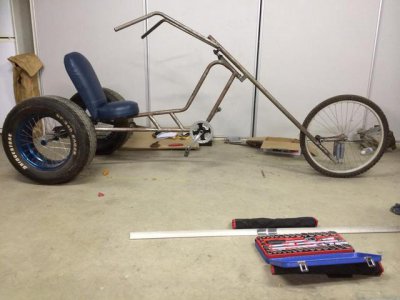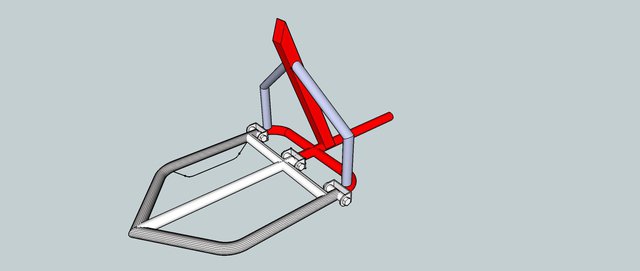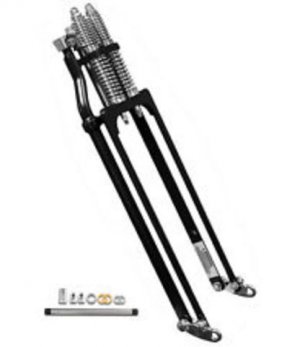- Joined
- Dec 9, 2014
- Messages
- 59
Okay i am really sorry in advance to everyone who is sick of me and will probably (hopefully not) waste their time reading this but i have been asking everywhere and researching but no forum is as knowledgeable and as active as this one, absolutely none, so I will cut to the chase and i promise that i will delete this thread as soon as i get an answer, once again i am really sorry.
Okay so if you have or haven't seen my other thread on beefing up a rear axle it kind of relates to that. i have a bike turned trike called a Gladiator chopper and i plan on putting a motor on it with rear suspension but i was wondering what size rating i should buy for the shocks (how many pounds)? The motor, + the clutch, + battery = 17.5kg
Frame = 7kg
I weight around 75kg
75kg
total = 100kg
So here is my tricycle;

and here is how the rear suspension set-up will look, from the corners of the verical 45 degree angled tubes, (coming from the red square tube(seat)) coming down on a close to 45' will be where the shocks will be mounted;

I will really really appreciate any help and if anyone doesn't appreciate this thread, let me know and it will be removed straight away I really really don't want to be a pest because i love this forum
thanks
little_sparky


Okay so if you have or haven't seen my other thread on beefing up a rear axle it kind of relates to that. i have a bike turned trike called a Gladiator chopper and i plan on putting a motor on it with rear suspension but i was wondering what size rating i should buy for the shocks (how many pounds)? The motor, + the clutch, + battery = 17.5kg
Frame = 7kg
I weight around
total = 100kg
So here is my tricycle;

and here is how the rear suspension set-up will look, from the corners of the verical 45 degree angled tubes, (coming from the red square tube(seat)) coming down on a close to 45' will be where the shocks will be mounted;

I will really really appreciate any help and if anyone doesn't appreciate this thread, let me know and it will be removed straight away I really really don't want to be a pest because i love this forum
thanks
little_sparky




